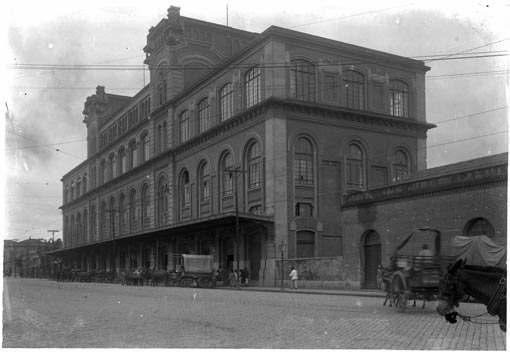
Between 1914 and 1938, the building, designed by architect Ramos de Azevedo, housed the offices and warehouses of Companhia Estrada de Ferro Sorocabana. After renovations, it hosted police stations linked to the State Department of Political and Social Order of São Paulo (Deops-SP), between 1940 and 1983.
With the extinction of Deops-SP, it was occupied by the Bureau of Consumer Protection (Decon). In 1997, its management was transferred from the Department of Justice to the Department of Culture, and, in 1999, the building was listed as a cultural asset by the Council for the Defense of Historical Heritage (Condephaat).
After three years of restoration, in 2002, the Memorial da Liberdade [Freedom Memorial, in English] was inaugurated, which presented to the public the old cells of the Deops-SP. In 2004, APAC took over the management of the building and installed the Estação Pinacoteca, with exhibitions, the Walter Wey Library, the Documentation and Memory Center, and the Vitae Auditorium.
From 2006 on, the Fórum Permanente de ex-Presos e Perseguidos Políticos do Estado de São Paulo [Permanent Forum of Former Political Prisoners and Persecuted People of the State of São Paulo] mobilized and proposed to the public authorities to change its name, since “Liberdade” (or “Freedom”, in English) was not suitable for a place where so many people suffered and died.
On May 1, 2008, a new project for the place started, and, on January 24, 2009, the Memorial da Resistência was re-launched, confirming its commitment to a broader understanding of the memory and political history of Brazil.
Find out more details about our history! Download the book about our 10 years (in Portuguese).


